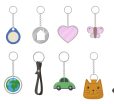Deer fences are an effective way to protect your property from damage caused by deer. However, like any outdoor structure, deer fences come with potential hazards that you need to consider. In this article, we’ll discuss some safety precautions and potential hazards to keep in mind when using a deer fence.
Electrical Hazards
Electric deer fences are a popular choice because they’re effective and low-maintenance. However, they can also be hazardous if not installed or used properly. The electric current running through the fence can cause serious injury or even death to humans and animals. To avoid electrical hazards, ensure that your electric fence is installed by a professional and that all electrical components are functioning correctly. You should also post warning signs around your property to alert visitors of the fence’s presence.
Entrapment
Deer fences are designed to keep deer out, but they can also trap other wildlife, such as birds or small mammals. To prevent entrapment, make sure that the gaps in your fence are not large enough for animals to become stuck. You should also check your fence regularly for any trapped animals and release them immediately if found.
Visibility
Some deer fences can be difficult to see, especially if they’re made of materials that blend into the background. This can pose a hazard to humans who may accidentally walk into the fence and injure themselves. To increase visibility, consider adding reflective strips or markers to your fence. This will also make your fence more visible to deer, reducing the risk of them running into the fence and injuring themselves.
Structural Integrity
Deer fences are exposed to various weather conditions, including wind, rain, and snow. Over time, this exposure can cause the fence to weaken, creating a hazard for humans and animals. To prevent structural integrity issues, ensure that your fence is installed securely and that all components are in good condition. You should also inspect your fence regularly and make any necessary repairs.
Trespassing
Deer fences can create a boundary between your property and your neighbor’s property, and this can cause issues if your neighbor accidentally trespasses on your property. To prevent trespassing, ensure that your fence is installed in the correct location and that there are no gaps or holes in the fence that would allow animals or humans to cross over.
Conclusion
Using a deer fence is an effective way to protect your property from deer damage, but it’s essential to consider the potential hazards and take appropriate precautions. Electrical hazards, entrapment, visibility, structural integrity, and trespassing are some of the hazards you need to keep in mind when using a deer fence. The professional installation of a deer fence from https://www.bennersgardens.com/deer-fence can ensure your garden is protected against damage from deer and increase your property’s value. By following these safety precautions, you can ensure that your deer fence is safe for both humans and animals.
Read Also:




























